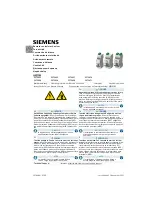
- 7 -
INTRODUCTION AND GENERAL DESCRIPTION
Intended use
Multi-functional, portable, battery-powered starter. Ideal for anyone
needing an emergency starter. Its applications include use on motorcycles,
automobiles, boats and many more. Fully compatible with any 12volt star-
ter system.
The starter uses LITHIUM BATTERIES
; this makes the device extremely
compact and easy to handle.
The multi-functional starter is also equipped with a powerful LED light and
four outputs to power and/or charge 5V/19V electronic devices.
Description (figure A):
1. Book type pack.
2. Multifunctional starter.
3. Starter clamps.
4. 19V/3.5A output cable.
5. Charger cable with cigarette lighter type 12V jack plug.
6. Adaptor cable to connect the USB port on the device to various power
and/or charge inputs on the main commercially available electronic
devices.
7. Output adaptors for the cable
(fig. A-4)
.
8. Charging power unit.
9. Starter charging input.
10. Output USB 5V / 2A
11. 19V/3.5A output.
12. LED lights.
13. Starter clamps outs
(fig. A -3)
.
14. ON/OFF switch for the charge level, the output ports
(fig. A-10 and 11)
and the LED light
(fig. A-12)
.
15. Internal battery charge status indicator LED.
Simboli (figura B):
1. Carefully read the safety instructions and operating instructions
2. General hazard
3. Danger of explosion
4. Danger of corrosive substances
5. Danger of electric shock
6. Free flames are forbidden
7. Eye protections must be worn
8. Symbol indicating separation of electrical and electronic appliances for
refuse collection. The user is not allowed to dispose of these appliances
as solid, mixed urban refuse, and must do it through authorised refuse
collection centres.
INSTALLATION POSITIONING THE STARTER
When using the starter, position it on a horizontal, flat and stable surface.
OPERATING INFORMATION
How to use the starter:
WARNING: follow these instructions meticulously, and
always in the order given below!
Always prevent the black and red clamps from touching
each other or a common cable!
- Make sure that the vehicle or boat to be started is switched off (switch or
ignition key in the OFF position).
- Connect the red clamp POS. (+) to the battery terminal POS. (+), then
connect the black clamp NEG. (-) to the vehicle chassis or the battery
terminal NEG. (-).
- Connect the plug of the starter tongs.
WARNING: failure to follow these rules may compromise the
operating life of the device:
- Turn the vehicle ignition to the start position for no more than 3 se-
conds.
- If the vehicle or boat does not start, wait at least 20 seconds before
trying again.
- If the vehicle or boat still does not start, wait at least 2 minutes before
trying again.
After a successful start, with the engine running, follow the sequence of
instructions below with great care:
- Disconnect the black clamp (negative) from the vehicle.
- Disconnect the red clamp (positive) from the vehicle.
- Remove the starter cable connector from the starter.
- Replace the cables and the starter in their seats inside the case. It is highly
recommended to recharge the starter as soon as possible.
Use of ‘starter as the feeding device and / or charging 19V:
- Select the output cable
(fig. A-4 or fig. A-6)
with the terminal suitable
for the device to be powered
(fig. A-7)
according to the required voltage/
current;
- Insert the cable terminal into the appropriate output port on the starter
(fig. A-10, 11)
;
- Press the ON button
(fig. A-15)
.
- Insert the other cable terminal into the device to be powered.
Using the LED lights
- Press and hold the ON button
(fig. A-14)
for a few seconds to enable the
continuous LED light function.
The press the button in the following sequence:
- once to start the blinking light;
- twice to start the emergency signal;
- three times to switch the light OFF.
CHARGING
Important! To achieve maximum battery performance, always charge be-
fore use, then after every time it is used and, in any case, at least every 3
months.
The unit can be charged using a 230V power supply using the power supply
adapter supplied,
(fig. A-8)
or using a 12V cable with a jack plug
(fig. A-5)
.
Press the button
(fig. A-14)
to check whether the battery needs charging.
The LEDs
(fig. A-15)
indicate the charge status of the battery, which light
up as the status increases:
- one LED only: low battery;
- all LEDs are on: fully charged battery.
Charging with 230V 50Hz power supply
WARNING: Use the supplied power supply adapter only!
- Insert the power supply adapter plug
(Fig. A-8)
into a 230V socket or other
compatible with the network voltage.
- Now insert the relative output plug into the charger socket
(fig. A-9)
.
- The LEDs
(fig. A-15)
light up in sequence when the unit is charging and
remain on when the unit is fully charged.
- The starter is fitted with a control device to prevent overcharging the battery
and power unit. Leave the system to charge for as long as necessary.
Charging onboard the vehicle using 12VDC power supply:
- Insert the jack plug on the supplied cable
(Fig. A-5)
into the cigarette
lighter socket in the car or onboard the boat.
- Insert the other terminal of the supplied cable into the starter charge so-
cket
(Fig. A-9)
.
SPECIFICATIONS:
Type of battery:
- rechargeable factory-sealed lithium-polymer battery.
Battery capacity:
- 9000 mAh
Starter current (12V):
- 400 A
- (600A peak)
Light:
- LED
Output sockets:
- two USB sockets 5V - 2A
- 19 V – 3.5A socket
Characteristics:
- ON/OFF switch
- automatic charging level reset switch
- charge level and fully charged indicator LEDs
- continuous, blinking and emergency LEDs
Weight:
- 350 g


























